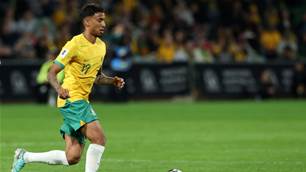FFA CEO Ben Buckley has talked up the game’s growth ahead of the crucial TV rights deal in 2013 while outlining an ambitious four year strategy for the game.
He outlined the FFA’s vision at yesterday's post AGM announcement following Chairman Frank Lowy’s re-election as the national body’s leader for four more years.
And while the speech was short on details - and there wasn’t a chance for journalists to quiz Buckley on specifics - the CEO was in an expansive mood.
But he conceded TV money – like most countries – is vital in underpinning the growth strategies outlined.
“To achieve all the ambitious targets in our strategic plan, we need capital to invest,” he said.
“We are saying to free-to-air, pay TV and digital networks that football has the biggest reach of any sport in Australia – across social class, gender, ethnicity and age demographics – and it’s a truly national footprint.
“Football has more participants than all other codes combined and is the fastest growing sport among women and girls.
“Importantly our demographic skew towards youth means we are a growth story, particularly in this digital age.
“We have a network of 12 websites and affiliated social media channels covering national teams, national competitions and member clubs," he said.
Buckley pointed to page impressions and unique browsers being up 30% and 80,000 downloads of new mobile apps for the Socceroos and A-League as well as over 270,000 fans on the FFA’s Facebook pages.
“In the first 30 days following the launch we substantially increased our presence in the digital community," he said.
“These digital numbers, aligned with our TV audience figures show that Australians have a huge appetite for football content.
“Our task is to build a compelling case for media companies to invest in this content as a core ingredient in their offerings.
“We are confident of securing a TV rights deal that recognises football’s popularity, reach and potential.”
Buckley joked he wasn’t about to start his own Twitter account but said he read reports about what was being discussed across the various social media platforms.
TV rights and the game’s growth go hand in hand and Buckley said the ambition was to maintain improvements in the game across the board.
“We want to make Australia a top 10 football nation. What does that mean? Well, it’s much more than a FIFA Ranking can measure," he added.
“This is our vision... the development of a football culture ingrained with unique Australian characteristics ... making making football a social and sporting powerhouse in Australia.
"And building an Hyundai A-League that rivals the best in Asia."
Clearly the league is on an upwards trajectory with attendances up almost 50 percent, TV audiences up 62 percent and club memberships trending upwards by 17 percent.
However, Buckley emphasised the importance of financial stability for all clubs after it was revealed that the governing body had made a small operating loss this year largely due mainly to propping up a number of A-League clubs over the last year.
But with clubs such as Phoenix, Newcastle, Brisbane and Adelaide all under new and in some cases very wealthy owners - and Fury no longer in the league - it suggests an operating profit could be on the cards next year.
On the hot button issue of expansion, it won’t restart until the 10 team A-League has consolidated its business model and bottom line, he explained.
“There is a natural public debate around expansion – usually around greater western Sydney, which is the heartland of the game," said Buckley.
“However, in the strategic plan period to 2015, expansion will only occur when those economic pre-conditions of stability and sustainability exist.”
He added that the goal was not only to win the next Asian Cup – hosted by Australia in 2015 – but that it leaves a legacy for the game.
And by 2015 he wanted to see Australia “contesting” for a top 10 spot in the FIFA world rankings.
FFA were also keen to talk up the MyFootballClub online database for grassroots football, aiming for one million by 2015.
This, they believed, taps into a market that is one of the code’s clear strengths.
This database can be accessed by A-League club members who may wish to opt in for special deals on the Socceroos, for example.
It also offers sponsors a ready-made and large database for their products.
“This is the game-changer for Australian football,” trumpeted Buckely.
He added in an olive branch to “old soccer” clubs and those outside of the A-League, that the national competitions review will ensure the second tier, semi pro clubs will have a “greater role in the broader plan” - although how that would happen was not explained.
Related Articles

Socceroos midfielder embraces move to England

Cardiff City snap up sought-after Socceroos starlet













